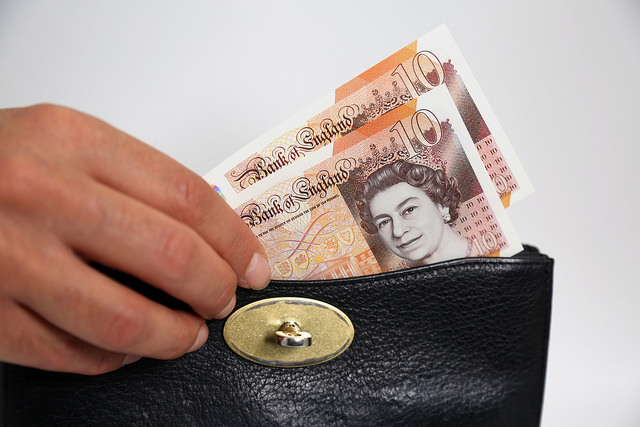News
Banknotes are ‘low risk’ for coronavirus transmission

A study by the Bank of England found that Covid-19 doesn’t survive on banknotes at high levels for very long.
Research by the Bank of England found that the way people use cash has changed during the pandemic. Less cash is being used for transactions, partly because people are shopping online more but also because there are concerns about banknotes transmitting the virus.
Figures from the bank shows that online shopping accounted for 28% of UK retail spending in September 2020, compared with 19% a year earlier, having peaked at 33% in June. At least some of this increase can be attributed to the Covid crisis.
As well as prompting a shift towards online shopping, Covid has also affected how people pay for things in shops.
The government has advised retailers to minimise contacts around transactions, for example, by considering using contactless payments.
In line with this, many retailers, including major supermarkets, have been encouraging consumers to use contactless payments, while still accepting cash. Upon reopening their stores after the initial lockdown period, a number of other retailers announced that they would no longer accept cash payments at all.
The Bank of England commissioned testing to better understand the actual risks of transmitting Covid via banknotes.
It pointed out that concerns that cash can be a potential carrier of bacteria or viruses is nothing new, with cash being one of many surfaces that many contain bacteria or viruses.
However, a bacteria or virus being present on a surface does not necessarily mean that somebody touching that surface risks picking up an infection.
To understand better how coronavirus behaves on banknotes the bank commissioned scientific testing to explore the viability with time.
It found that even if exposed to a high dosage equivalent to being directly sneezed on, the virus did not survive at high levels on notes – either of the modern polymer or old-fashioned paper variety – for very long.
The study found that the level of virus found on a banknote remained stable for one hour after exposure. Over the next five hours, the amount of the virus present declined rapidly.
After six hours, virus droplets on banknotes had declined to 5% or less of their initial level on both paper and polymer notes. After 24 hours after exposure, the virus was only present at very low levels on all surfaces tested by the study.
The study concluded: “In this study the virus does not survive at high levels for very long on banknotes. A few hours after infection, even at high doses, the levels and therefore associated risk of infection appear low.
“We also conclude that there is no material difference in the viability of the virus on polymer and paper banknotes. Further, the survival of virus on banknotes is no greater — indeed appears potentially less — than on reference surfaces representative of the many surfaces that people may come into contact with in their routine life.”
The study found that the major risks of catching coronavirus in a retail environment come from directly from breathing in exhaled droplets or aerosols when in close proximity to an infected person within the shop.
There is also a risk potentially from touching a ‘high touch’ object such as the handles of shopping baskets or shopping trolleys, PIN keypads, products on open shelves, or the touchscreens of self-checkout terminals.